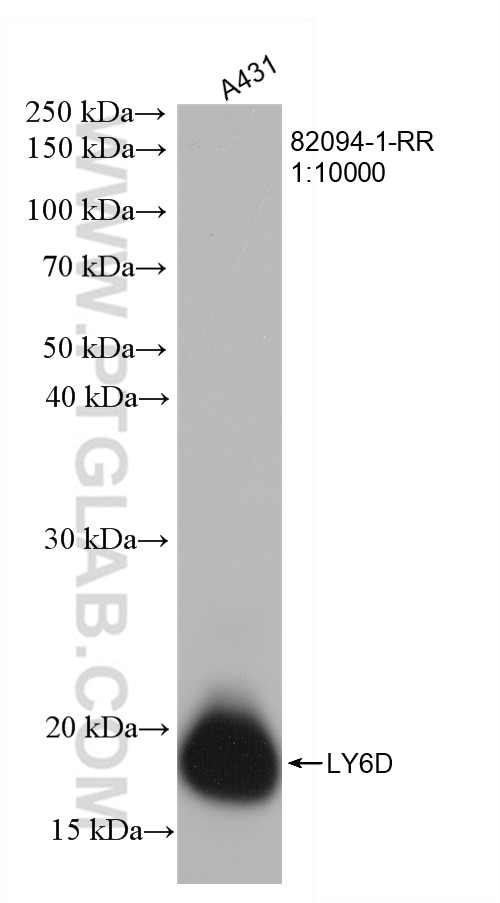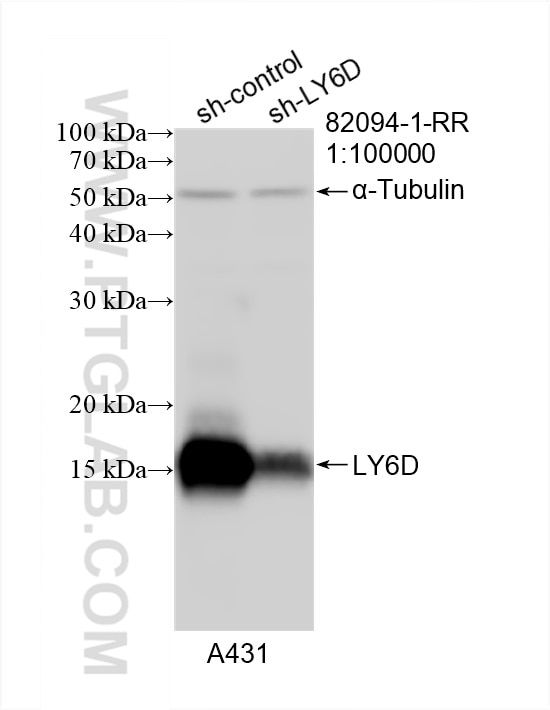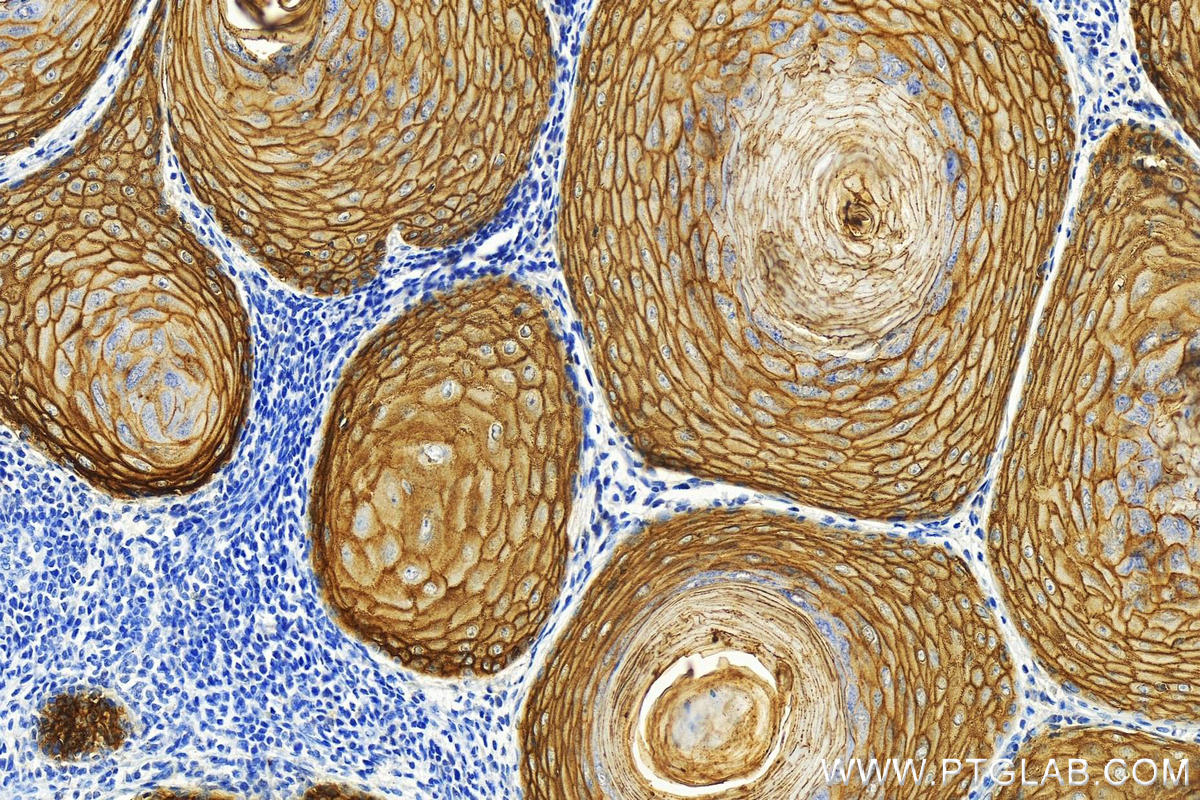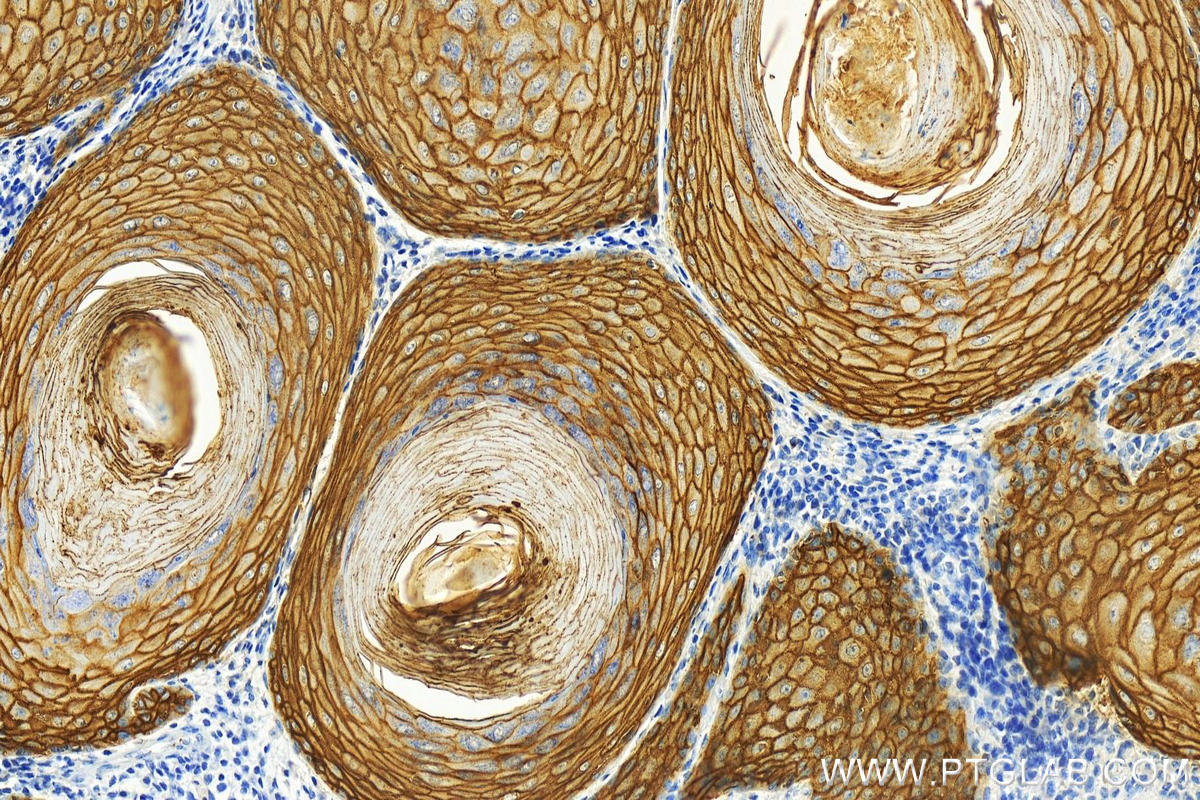- Featured Product
- KD/KO Validated
LY6D Rekombinanter Antikörper
LY6D Rekombinant Antikörper für WB, IHC, ELISA
Wirt / Isotyp
Kaninchen / IgG
Getestete Reaktivität
human
Anwendung
WB, IHC, ELISA
Konjugation
Unkonjugiert
CloneNo.
4F12
Kat-Nr. : 82094-1-RR
Synonyme
Geprüfte Anwendungen
| Erfolgreiche Detektion in WB | A431-Zellen |
| Erfolgreiche Detektion in IHC | humanes Hautkrebsgewebe Hinweis: Antigendemaskierung mit TE-Puffer pH 9,0 empfohlen. (*) Wahlweise kann die Antigendemaskierung auch mit Citratpuffer pH 6,0 erfolgen. |
Empfohlene Verdünnung
| Anwendung | Verdünnung |
|---|---|
| Western Blot (WB) | WB : 1:5000-1:50000 |
| Immunhistochemie (IHC) | IHC : 1:1000-1:4000 |
| It is recommended that this reagent should be titrated in each testing system to obtain optimal results. | |
| Sample-dependent, check data in validation data gallery | |
Produktinformation
82094-1-RR bindet in WB, IHC, ELISA LY6D und zeigt Reaktivität mit human
| Getestete Reaktivität | human |
| Wirt / Isotyp | Kaninchen / IgG |
| Klonalität | Rekombinant |
| Typ | Antikörper |
| Immunogen | LY6D fusion protein Ag10714 |
| Vollständiger Name | lymphocyte antigen 6 complex, locus D |
| Berechnetes Molekulargewicht | 128 aa, 13 kDa |
| Beobachtetes Molekulargewicht | 13-14 kDa |
| GenBank-Zugangsnummer | BC031330 |
| Gene symbol | LY6D |
| Gene ID (NCBI) | 8581 |
| Konjugation | Unkonjugiert |
| Form | Liquid |
| Reinigungsmethode | Protein-A-Reinigung |
| Lagerungspuffer | PBS with 0.02% sodium azide and 50% glycerol |
| Lagerungsbedingungen | Bei -20°C lagern. Nach dem Versand ein Jahr lang stabil Aliquotieren ist bei -20oC Lagerung nicht notwendig. 20ul Größen enthalten 0,1% BSA. |
Hintergrundinformationen
LY6D, also named as E48 and ThB, may act as a specification marker at earliest stage specification of lymphocytes between B- and T-cell development. It marks the earliest stage of B-cell specification.
Protokolle
| PRODUKTSPEZIFISCHE PROTOKOLLE | |
|---|---|
| WB protocol for LY6D antibody 82094-1-RR | Protokoll herunterladen |
| IHC protocol for LY6D antibody 82094-1-RR | Protokoll herunterladenl |
| STANDARD-PROTOKOLLE | |
|---|---|
| Klicken Sie hier, um unsere Standardprotokolle anzuzeigen |





